Click to enlarge photos 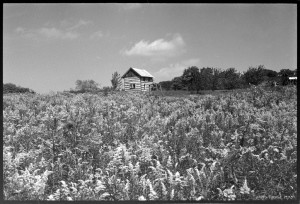
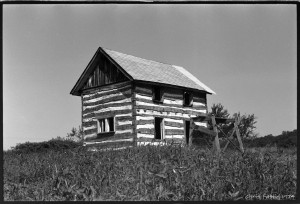
Tag: Photography
Stemming the tide
Below is a diagram that was never shown to me in science class. Alfred Wegener proposed his theory of continental drift in 1912, but it was not until 1960 that most scientists began to accept the new paradigm that continents move around. The idea of crust formation at mid ocean ridges came even later in 1966. So when scientists and teachers in the 1950s and 1960s presented a story about the serpentine rock underlying Soldiers Delight, they got it wrong. Serpentinite is formed in the lower oceanic crust, typically at the mid ocean spreading centers. That’s where it picks up its heavy minerals, like chromium, nickel, and magnesium, which are more abundant in the mantle and deep crust. When Africa floated over here 300 million years ago, a little bit of this oceanic rock got pushed along with it and ended up in the Appalachian Mountains, and in Soldiers Delight. Nobody knew that in 1960.
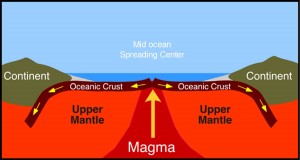
Red Dog Lodge
Click photos to enlarge

Red Dog Lodge was built in 1912 as a hunting lodge and has been a symbol of Soldiers Delight for me since I started meeting, playing, and hiking there when I was a kid in the 1950s. It always seemed like a place with secrets, a place where men once did things that weren’t done anymore, things that Tom Sawyer would know about because he had seen them in a book. It was built for Mr. Dolfield, who gave his name to the road I grew up on, and also for the namesake of Sherwood Hill Road where our three-letter friends the Lees and the Coes lived. I knew Mr. Hibline who used the lodge after World War II, but I never knew that he was a person who used it, or what it was used for. It never occurred to me that somebody owned it. So I didn’t know much at all, but it was always good to be at Red Dog Lodge. Continue reading “Red Dog Lodge”
Copy that
I watched eBay auctions for Nikon D3100 cameras for a day, then started watching auctions for D5100 cameras. I assumed that the upgrade from the Nikon D40’s six megapixels had to be at least to 14 megapixels to make a noticeable improvement in copies of old Plus-X film, and I assumed that to really record the film grain, the D5100’s 16 megapixels would be required. But the D5100 was $100 more, and the raw files it makes are 20 MB, compared to 15 MB for the D3100 (and 5 MB for my old D40). The D5100 is also bigger and a bit heavier. After several D3100 auctions completed, I ordered a refurbished one from Adorama for $350, about the price used ones were going for on eBay with a kit 18-55 mm VR lens. This gave me a 90 day warranty and it was easy to order a couple of spare batteries. It arrived in 1.5 days for $6 shipping, way better than most eBay deals. Continue reading “Copy that”
Convergent artifacts
Click photos to enlarge.

Digging around for 40 year old negatives last week turned up a couple of even older things. I found a little T-shirt, and a couple of copies of the Sunday rotogravure section from The Baltimore Sun for August 21, 1960, 53 years ago today. The brown section had been archived because it included photos of my entire family in a two page spread about Soldiers Delight. We were honored to be pictured in this article because the photographer was A. Aubrey Bodine who had worked for the Baltimore Sun since 1920. We were chosen to be the models for this photo shoot because my parents were advocates for the preservation of the undeveloped tract of serpentine barrens near our home in Owings Mills, Maryland. Also because we were really cute. Continue reading “Convergent artifacts”
Negative space
Click images to enlarge.
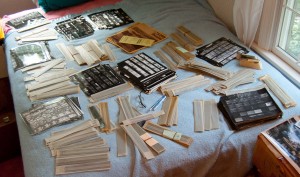
In the 1970s I exposed about 400 rolls of black and white film. Most of these were 36 exposure rolls of 35 mm Kodak Plus-X which I bulk loaded and developed at home. I made an 8 x 10 inch contact print of each roll, and put an accession number on the contact sheet and the glassine envelope with the negative strips. I still have all 14,000 of these negatives and contact prints. If you think that preserving this collection suggests that I am farsighted, consider that I never put a single date on any of this material. In my twenties, it never occurred to me that I would not remember where and when I took each photo. Continue reading “Negative space”
Lake Warner map embed
This Google Earth embed did not work well with all browsers so I was testing it here. You can learn more about this project here.
Lytro Schmytro
The Lytro camera is probably the most interesting advance in photographic technology this year. An array of microlenses allows the sensor to capture information about the exact direction from which light is coming, and that allows software to focus every part of the scene regardless of it’s distance from the camera. To highlight this advance, the company’s first camera produced interactive online images which could be refocused by clicking anywhere in the scene (see some here). We have all looked at photos with out-of-focus parts, and it is a novel experience to be able to click on or touch the fuzzy places and have the crisp focus shift as if a focusing ring was being turned. But it has also been maddening to know that the captured data would allow the entire photo to be in focus all at the same time, yet this was not an option for any Lytro photo. It was a clever marketing approach, because modern digital cameras with tiny sensors have very good depth of field, and many of the photos we take now already have everything in focus. Allowing the viewer to “focus the photo after it was taken” highlighted how new this technology was. Continue reading “Lytro Schmytro”
Kite’s eye view
 In the late nineteenth century, hand drawn “bird’s-eye maps” were a revelation to earthly New Englanders. When exotic hot air balloons were the only way to gain such a perspective, enterprising artists just imagined what a bird might see. The customers for these maps lived and worked in the buildings depicted, so these are probably placed with some accuracy, relying on existing maps for data. It is the details of the rest of the landscape that were recorded nowhere else. In the 1889 drawing below, cleared fields, orchards, and shrubby growth nearly to the top of Hogback Mountain confirm the wisdom that in 1850 the entire slope, like others all over Vermont, was probably cleared of trees. Today, the young ages of the trees tell the same story, but an old bird’s-eye view is still a revelation. Continue reading “Kite’s eye view”
In the late nineteenth century, hand drawn “bird’s-eye maps” were a revelation to earthly New Englanders. When exotic hot air balloons were the only way to gain such a perspective, enterprising artists just imagined what a bird might see. The customers for these maps lived and worked in the buildings depicted, so these are probably placed with some accuracy, relying on existing maps for data. It is the details of the rest of the landscape that were recorded nowhere else. In the 1889 drawing below, cleared fields, orchards, and shrubby growth nearly to the top of Hogback Mountain confirm the wisdom that in 1850 the entire slope, like others all over Vermont, was probably cleared of trees. Today, the young ages of the trees tell the same story, but an old bird’s-eye view is still a revelation. Continue reading “Kite’s eye view”
Practice
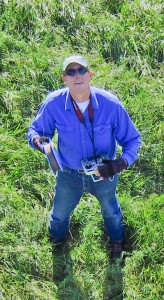
Over Middlebury
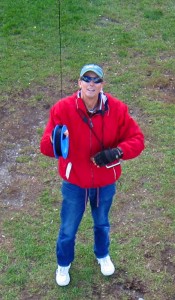
Last month I went to the Middlebury Farmers’ Market at Marble Works for the first time ever. My garden had been suffering some scurrilous blight and I was about to feed 10 people for the LEAFFEST weekend. I looked along the row of vendors to the steeple of the Congregational Church beyond some trees and realized there might be enough space to launch a kite there. A west wind would take the kite the length of the lawn and then over toward the church on the “Green,” the village commons. This could offer a unique view of the village center. But the wind almost never blows from the west here due to the north-south trend of the Champlain Valley. Other wind directions would make the flight less rewarding and the launch and landing more risky, and I had never flown a kite from such a small area surrounded by so many power lines, buildings, trees, river banks, and busy roads, so I assumed I would never fly there. Continue reading “Over Middlebury”
Downlink

Twice this year I walked around for more than an hour flying a kite-lofted camera that I thought was taking photos, when in fact it was just fooling me into getting exercise. On the first occasion the shutter controller battery died, and the other time the camera just got confused and stopped shooting. I think I sent radio commands to shoot too frequently and it decided to take a nap. This happened another time as well but I happened to reel everything down after only 20 minutes of not taking photos while I was jogging here and there. I have modified the controller so the battery lasts much longer, and I have learned to be patient when sending radio commands, but I am certain that the rather fragile KAP rig electronics will surprise me again with their unexpected inactivity. So I have been looking for a way to monitor the camera operation from the ground. I have been brainstorming with some friends about how to do this, and Don Blair, a physics graduate student at UMass has been prototyping an alert system based on a $20 pair of walkie-talkies. I couldn’t stand hearing about all the fun he was having in Amherst using MOSFETs to remotely push the walkie-talkie PTT button, so I decided to build my own solution. Continue reading “Downlink”
